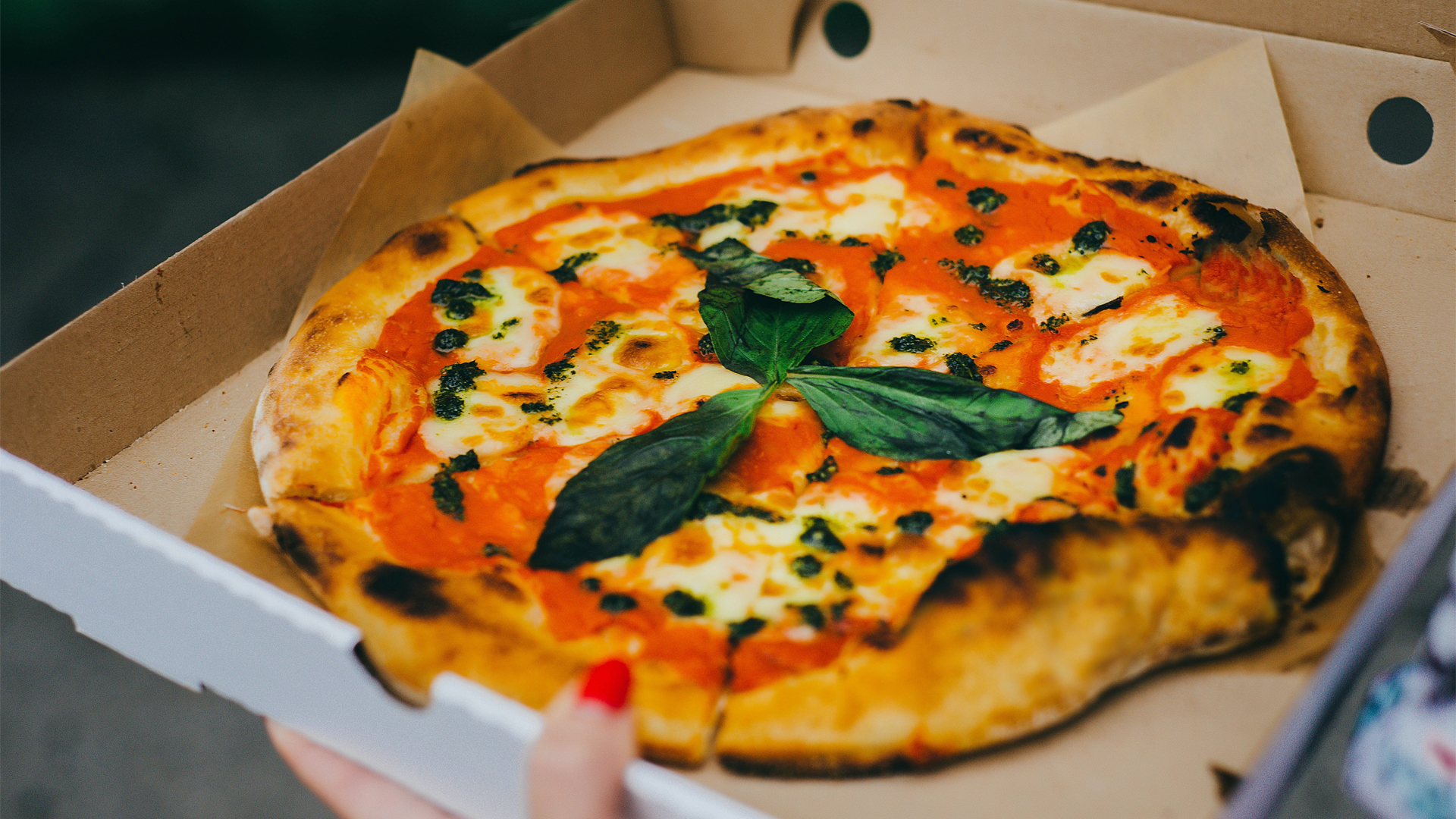Learn to make this crispy, thin-crust delicacy from the woman who inspired it
*For this story on pizza construction, writer Theresa Gambacorta imagines learning the process of making a Margherita pizza from its namesake. *
Food history is full of myth-making. Such is the case with Pizza Margherita- a crispy, thin-crust style pizza topped with San Marzano tomato sauce, mozzarella, and fresh basil born in Naples, Italy. One origin story is that Margherita Pizza drew its name from once cooking an egg yolk into the center of the pizza, making it look like the daisy flower, called "Margherita" in Italian. Forget the egg yolk story and cue the one about arranging mozzarella slices like a daisy flower's petals. However, the widely accepted "true story" behind Margherita Pizza is that chef Raffaele Esposito made this pizza in 1889 to honor the Unification of Italy. Its red tomatoes, white mozzarella, and green basil celebrate the colors of the Italian flag. He later named it after Italy's reigning Queen at the time, Margherita of Savoy, the wife of King Umberto I.
There's no better person to teach you how to build a Margherita Pizza fit for royalty than Queen Margherita herself.

Antique photograph of people from the World: Queen Margareth of Italy
After all these years, you look stunning —fresh as a daisy.
Grazie, Tesoro.
You've been described as a sensitive, proud, and strong-willed Queen. Do you think making your namesake pizza requires those same qualities?
Yes! You must have a sensitive palate and know the difference between good ingredients and excellent-quality ingredients, taking pride in the classic simplicity of La Pizza Margherita. And, you must have a strong will to remain open to trial and error —pizza-making is an art.
Take us through your tips for sourcing the best ingredients.
The dough: Margherita pizza is the OG —origine guarantita — of thin crust pizzas. So, skip the store-bought dough. It's terrible. Instead, make your own, combining Tipo 00 pizza flour and all-purpose flour for a light, airy crumb. Of course, since we're talking "royalty," The Silver Spoon Cookbook, published in 2015, showcases over 170 authentic, regional Italian recipes. And theirs is an excellent Margherita pizza dough recipe.
- The sauce: Skip the jar, and use imported, canned San Marzano tomatoes, as they do in Naples. These tomatoes, which grow in the Valle de Sarno area of Campania, have an outstanding balance of acidity and sweetness and will give your pizza an authentic Margherita pizza sauce flavor profile. Pass them through a food mill to remove the seeds, and add a pinch of salt, olive oil, and basta. Do not add garlic, dried oregano, or dried herbs, as they will overpower the flavor of the tomatoes. And don't soak the dough with sauce; add a layer of sauce thin enough that you can see through to the dough.
- The cheese: Fresh cow's milk (fior di latte) mozzarella, preferably homemade, from your local Italian deli is best, but allow it to drain for a few minutes, to remove some of its moisture but still retain its complex flavor. Avoid using "shredded" packaged mozzarella. Fresh mozzarella sold in plastic-wrapped logs is ok in a pinch since it naturally has lower moisture content and will melt easier in a home oven. Besides the quality of cheese, please use the mozzarella sparingly. Americans love globs of cheese coating their entire pizza. Not so with La Pizza Margherita: you want the perfect ratio of rich cheese, sweet sauce, and chewy crust. As I used to tell my husband, King Umberto: "Too much of a good thing is no good."
- Basil: Always use fresh basil leaves, gently torn and scattered on top. Some people tuck their basil under the cheese to don't risk scorching it. But if you preheat your oven correctly, your pizza will be in and out in less than 10 minutes. Plus, I like to see the pop of green color.
Speaking of oven, what are your tricks for the home pizza maker?
Woodburning oven temperatures go to 800 degrees F. A home oven probably goes to 500 degrees F. at most. So, to get a thin, crispy crust, you must first shape your dough on a cornmeal-dusted pizza peel, then transfer it to a preheated pizza stone. Better still is a convection oven, which circulates air like the convex shape of a wood-burning oven. If you don't have a pizza stone or a convection oven, use a large, round cast-iron skillet or aluminum sheet pan, as both materials retain heat well.
One final note?
Experiment with different dough techniques until you find the one that works with your home's unique ambiance. Air temperature, altitude, and water affect the outcome of baking. Legend says that La Pizza Margherita is superior in Naples because of the "soft" Neapolitan water that contains just the proper ratio of mineral salts that help develop the gluten in the pizza dough. I agree. But then again, I might be biased.
Theresa Gambacorta
Theresa Gambacorta is a writer and cookbook co-author. Her writing has appeared in such titles as La Cucina Italiana, Spin Magazine, Men's Fitness, Muscle and Fitness, and Centennial's special interest publications. She is the co-author of chef Joey Campanaro's Big Love Cooking (Chronicle, 2020), chef Nasim Alikhani's Sofreh (Knopf, 2023), and the forthcoming vegan cookbook, Eat What Elephants Eat by activist Dominick Thompson (Simon Element, 2024).

